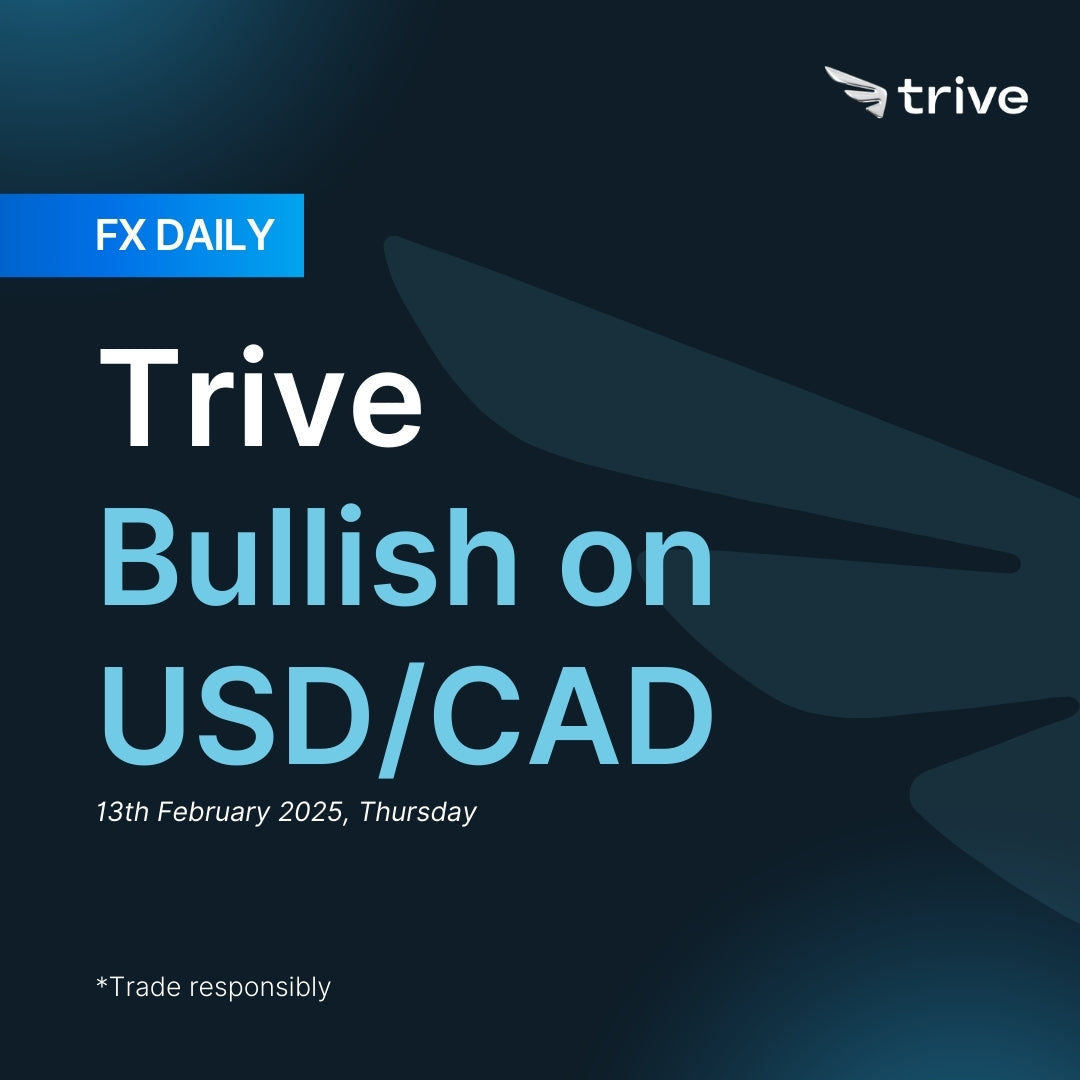FX Daily: Trive Bullish on USD/CAD

The hotter-than-expected January US CPI reinforces the Fed’s stance of ‘no rush to cut.’ Meanwhile, the ongoing US tariff threat remains the key driver for the CAD, keeping it under pressure for now.
CAD: Remain pressure
The baseline outlook for the CAD remains bearish, as uncertainty surrounding U.S. tariff threats persists, despite a 30-day delay in implementation. The primary reason for this delay appears to be Canada’s commitments to strengthening border security. However, Trump has stated that a final economic deal with Canada remains uncertain, adding that he is unsure whether Prime Minister Trudeau can offer any concessions to prevent the imposition of tariffs. Given the significant U.S. trade deficit with Canada, negotiations over the coming weeks will take place against the backdrop of heightened political uncertainty in Canada. Additionally, Trump has informed Republican lawmakers of his plan to impose reciprocal tariffs, with an official announcement expected early this week. Given these developments, tariffs appear increasingly likely, adding another layer of uncertainty for financial markets and weighing on the CAD in the near term.
On the domestic front, Canada’s latest jobs report surprised to the upside, with the economy adding 76K jobs and the unemployment rate unexpectedly falling to 6.6% from 6.7%. Following the report, market expectations for BoC rate cuts were revised to 53bps of easing by year-end, down from 65bps prior to the data release. However, despite the strong labor market print, external risks from U.S. trade policy are expected to remain the dominant driver for CAD in the near term.
Looking ahead, Canada’s economic calendar is relatively light, with no major market-moving events. The minutes from the Bank of Canada’s last meeting, due Wednesday, are unlikely to provide significant new insights, given ongoing global uncertainties. Meanwhile, Canadian money markets have recently adjusted their expected terminal rate to approximately 2.50%, a move that could reflect a risk premium associated with a potential trade war. As a result, market focus will remain on U.S.-Canada trade developments, with any negative headlines this week likely to exert further downward pressure on the CAD.
USD: Tariffs man
The baseline outlook for the USD remains bullish, driven by trade policy developments under President Trump, the Federal Reserve’s stance, and the resilience of the U.S. economy. Firstly, while Trump has delayed tariffs on Canada and Mexico for 30 days, providing temporary relief to markets, and see the tariffs are being used as a negotiating tactic rather than a fundamental shift in trade policy. However, uncertainty remains high and recent USD movements suggest that markets may be overly optimistic about Trump’s approach to tariffs. A key date to monitor is April 1, when the U.S. Commerce Department and Trade Representative will conclude a comprehensive review of trade deficits. Significant tariffs are unlikely to be implemented before then, as formal recommendations must first be made. Additionally, Trump has informed Republican lawmakers of his intention to impose reciprocal tariffs, with an official announcement expected early this week. Given these developments, tariffs appear inevitable, adding another layer of uncertainty to financial markets and reinforcing the USD’s safe-haven appeal.
Secondly, the Federal Reserve remains in no rush to cut rates, as echoed in recent speeches by Fed officials. Policymakers have acknowledged policy uncertainty, with Collins highlighting that tariffs could impact inflation, while Bostic suggested that the Fed might either look through tariff-induced price effects or respond if inflation expectations shift. Overall, Fed members appear aligned in their outlook—monetary policy is now significantly less restrictive than before, and given the economy’s strength, there is no urgency to adjust rates in the near term, thus further support the USD.
Thirdly, the U.S. economy remains strong and resilient, as reflected in the January Non-Farm Payrolls (NFP) report. While January NFP came in at 143K, below the 175K consensus, upward revisions of 100K for the previous two months offset the miss. The unemployment rate declined to 4.0% from 4.1%, and average hourly earnings (AHE) rose 0.5% m/m, signaling robust wage growth. Furthermore, benchmark revisions were not as severe as initially projected. The downward revision for the 12 months ending March 2024 was adjusted from an expected 818K to 598K, with subsequent data revisions painting a stronger labor market picture. Importantly, October, November, and December job figures were revised higher, suggesting a stronger employment trend at the end of 2024 than previously thought. Taken together, these factors support the Fed’s stance of holding rates steady for now, with no imminent need to cut.
Looking ahead, market attention will focus on U.S. economic data, particularly the January CPI report, as well as further developments on Trump's tariff policies. The market expects core CPI to come in at 0.3% m/m, which would reinforce the case for the Fed to remain on hold for several months. For the Fed to consider a rate cut as early as March or H1 2025, inflation would need to track closer to 0.17% m/m, aligning with a 2% y/y inflation target. In summary, barring any surprises from January CPI or a significant shift in Trump’s tariff policies, such as the reciprocal tariffs under discussion, the USD is expected to remain supported in the near term.
 USD/CAD 4H
USD/CAD 4H
Disclaimer
This material is provided for informational purposes only and does not constitute financial, investment, or other advice. The opinions expressed in this material are those of the author and do not necessarily reflect the views of Trive International. No opinion contained in this material constitutes a recommendation by Trive International or its author regarding any particular investment, transaction, or investment strategy. This material should not be relied upon in making any investment decision.
The information provided does not consider the individual investment objectives, financial situation, or needs of any specific investor. Investors should seek independent financial advice tailored to their individual circumstances before making any investment decisions. Trive International shall not be liable for any loss, damage, or injury arising directly or indirectly from the use of this information or from any action or decision taken as a result of using this material.
Trive International may or may not have a financial interest in the companies or securities mentioned. The value of investments may fluctuate, and investors may not get back the amount they originally invested. Past performance is not indicative of future results.
For more information about Trive International, please visit http://trive.com/int
Additional Information
Investing involves risk, including the potential loss of principal. Diversification and asset allocation strategies do not ensure a profit or guarantee against loss. The content in this material is subject to change without notice and may become outdated or inaccurate over time. Trive International does not undertake any obligation to update the information in this material.
By accessing this material, you acknowledge and agree to the terms of this disclaimer. If you do not agree with these terms, please refrain from using this information.
No comments
Home
Trive
TriveHub





0 comments